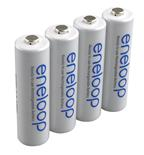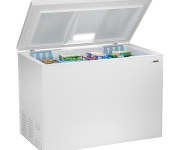Rechargable Batteries: Sanyo Eneloop

Recent additions have increased our need for batteries to the point that buying regular disposable batteries have become a problem in terms of cost and environmental impact.
There are a large number of sites that review rechargable batteries, however battery chargers don’t seem to get the same attention. ConsumerReports.Org is usually the first stop when researching a product, and while they did have current ratings for batteries, their testers didn’t specify which chargers were used (as of December 2009, the Sanyo Eneloop was the highest rated rechargable).
After a bit of reading, I found that the following items were required in both the charger and batteries:
- Batteries must supply 1.5V. Sanyo released two versions of it’s charger, one that came with the LR03 (1.2V) batteries and a pack that came with the HR03 1.5V batteries. The baby products that we are using require a 1.5V AA battery rating [HR03]. Using 1.2V batteries translates to underpowered devices (reduced “performance” and a shorter time between charges).
- Charger must be able to charge each cell individually. Some chargers only work with pairs of batteries, instead of being able to charge just 1 battery (or, more commonly three batteries).
After reading a number of reviews, we’ve started using the following:
- Sanyo Eneloop 8 Pack AA NiMH Pre-Charged Rechargeable Batteries
- Sanyo Eneloop AAA NiMH Pre-Charged Rechargeable Batteries (4 Pack)






